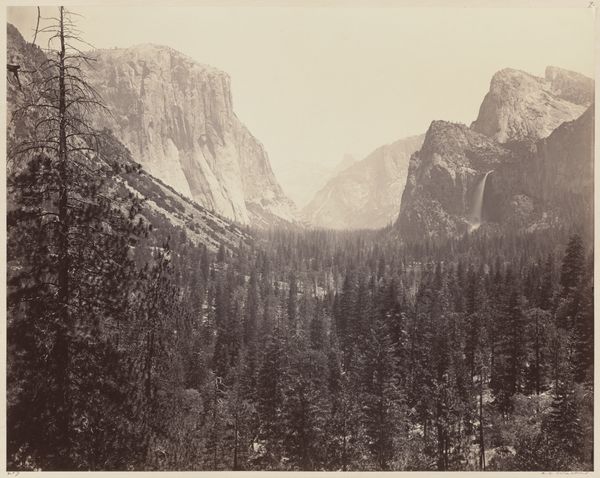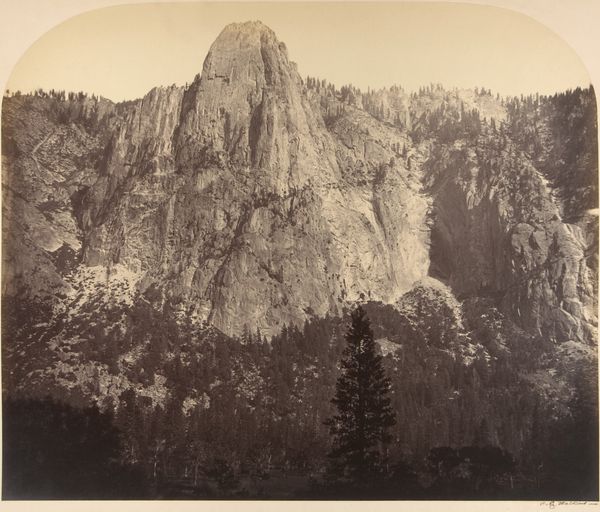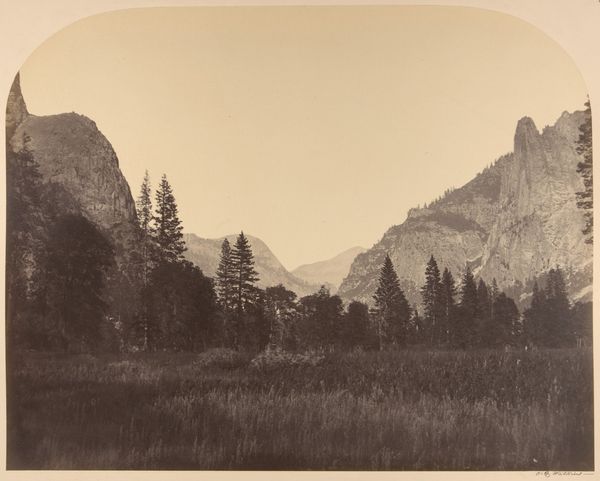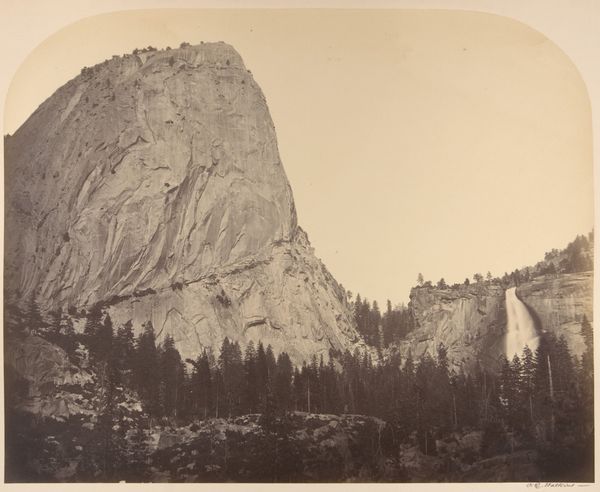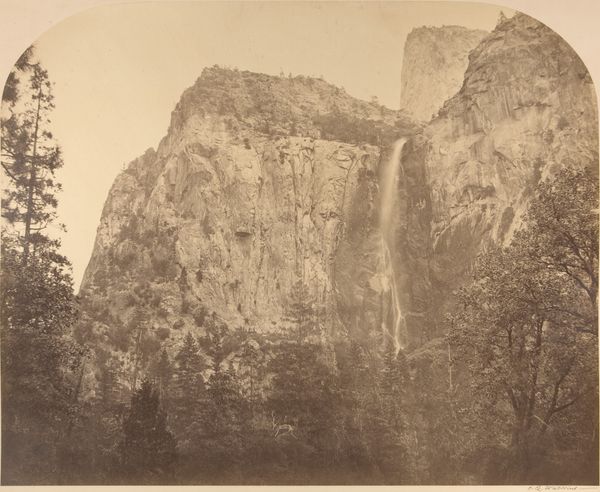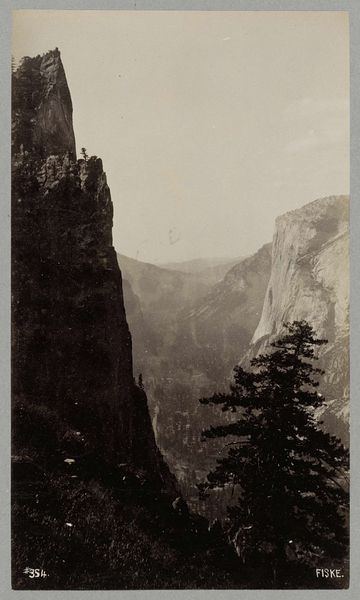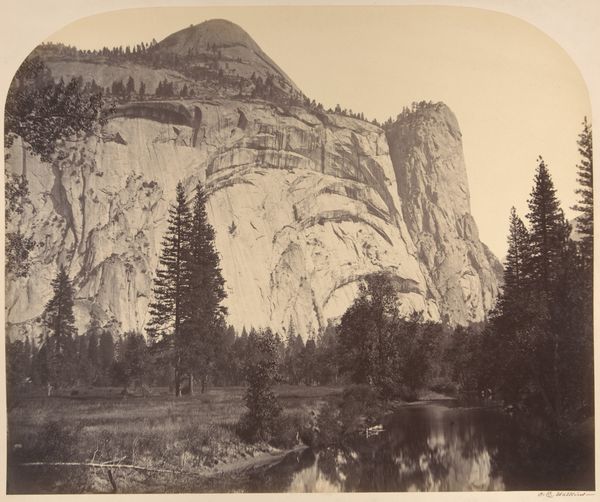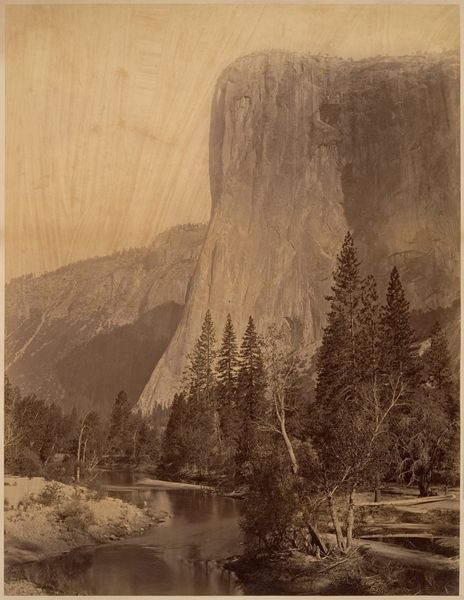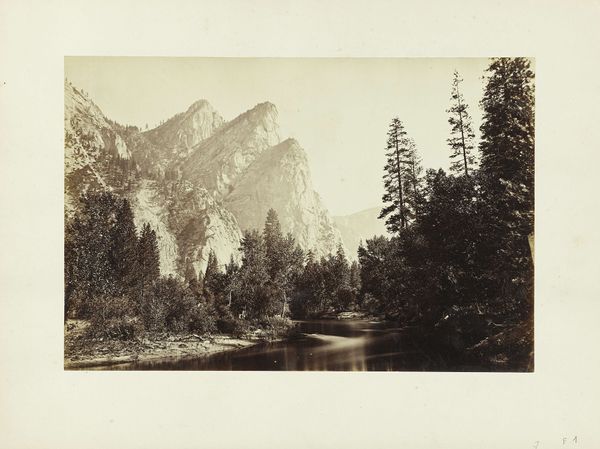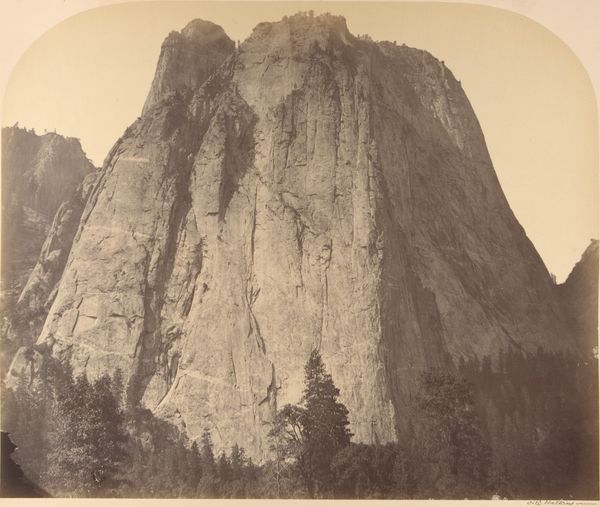
Tenaya Canyon from Union Point, Valley of the Yosemite 1872
0:00
0:00
print, plein-air, photography, albumen-print
# print
#
plein-air
#
landscape
#
photography
#
landscape photography
#
hudson-river-school
#
albumen-print
#
realism
Dimensions: sheet (trimmed to image): 43 x 53.8 cm (16 15/16 x 21 3/16 in.) mount: 62 x 74.8 cm (24 7/16 x 29 7/16 in.)
Copyright: National Gallery of Art: CC0 1.0
Editor: This is "Tenaya Canyon from Union Point, Valley of the Yosemite," a landscape photograph taken in 1872 by Eadweard Muybridge. It looks like an albumen print. The composition really emphasizes the vastness of the canyon. What do you see in this piece, beyond just a pretty view? Curator: This photograph, ostensibly documenting a sublime landscape, demands we consider its role within the socio-political context of westward expansion. Muybridge wasn't just capturing a scene; he was participating in the visual construction of the American West as a resource to be exploited. The romantic framing masks the violent displacement of Indigenous populations. Do you notice how the landscape is presented as empty, devoid of human presence? Editor: I do now that you mention it! It does seem… curated to erase any evidence of prior habitation. So the beauty is almost a deception? Curator: Precisely. The photograph becomes a tool of power. The sublime, majestic Yosemite Valley, seemingly untouched, reinforces the narrative of manifest destiny – the supposed right to claim and exploit land. This "discovery" ignores centuries of Indigenous stewardship. Think about the politics embedded within this seemingly objective portrayal. Whose narrative is amplified, and whose is silenced? Editor: So, appreciating its beauty requires acknowledging the historical injustice it might be complicit in? Curator: Exactly. We must engage critically, understanding that landscape photography is never neutral. It actively shapes our understanding and relationship with the land, reflecting broader issues of colonialism, environmentalism, and representation. How does this reframing change your perception of the image? Editor: It makes me see the image with a sense of responsibility. I see the beauty, but also the need to question what it’s showing, and what it isn’t. Curator: And that questioning is crucial for a more equitable engagement with history and art.
Comments
No comments
Be the first to comment and join the conversation on the ultimate creative platform.
